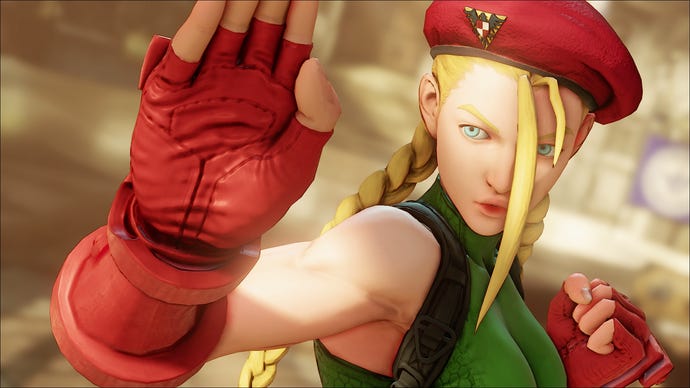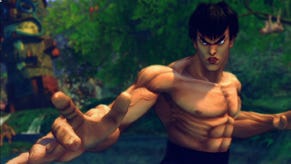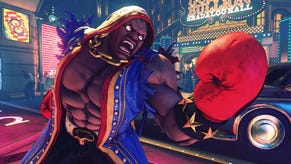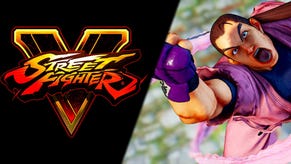Yoshinori Ono Reflects on Street Fighter 5: “We Re-Learned the Importance of Listening to Our Players”
An interview on the lessons learned from Street Fighter's latest entry.
This article first appeared on USgamer, a partner publication of VG247. Some content, such as this article, has been migrated to VG247 for posterity after USgamer's closure - but it has not been edited or further vetted by the VG247 team.
Street Fighter is one of the pillars of fighting games. From its earliest days on, it defined 2D fighting and became a cultural touchstone for gaming in pop culture. But with Street Fighter 5, Capcom has had to play catch-up for some time.
With the launch of Street Fighter 5: Champion Edition, it feels like Capcom has finally realized its vision for this entry in the series. Despite its launch woes, Street Fighter 5 seems to have rallied in the eyes of its dedicated competitive scene. Its many new features, from V-Triggers and Skills to a new monetization scheme, all seemed relatively controversial at launch. But how do they look now, and moving forward?
From netcode to Switch, there are still places for Street Fighter to grow and evolve. Throughout the years, there's been one voice who's constantly vouched for the series. We talked to Yoshinori Ono, longtime Street Fighter series producer, about the reception to Street Fighter 5 and the way forward.
USgamer: Street Fighter 5: Champion Edition just recently went live. What lessons have you learned in the four years between Street Fighter 5's launch and now? Would you do anything differently?
Yoshinori Ono: We mentioned during the launch of Street Fighter 5 that we always envisioned the game to continue to be supported for many years. We received a variety of opinions about this, but I believe we are in the current state thanks to the support of our loyal fan base. I also believe that as a development team, we became better from those voices, in terms of listening to what matters most to our players and making decisions with them in mind.
After the Street Fighter 5: Arcade Edition launch, we were able to see an increased number of players and a large amount of positive feedback from our fans. It was during this time that we re-learned the importance of listening to our players. I believe that all of the additions, enhancements, character selections and game system updates incorporated ideas that stemmed from the feedback we received from our players. I think it’s because of these learned lessons that Street Fighter 5: Champion Edition and the Upgrade Kit are being positively received by the community.
You famously had to fight for Street Fighter 4. After a rocky start with Street Fighter 5, does it still feel like there's any lingering resistance to the series at Capcom? What keeps you fighting for Street Fighter?
During that interview, I remember saying, “I spent quite a lot of money on Final Fight and Street Fighter II at the arcade. Now I want to earn it back by working at Capcom!” Since I have been working at Capcom for over a quarter of a century now, I am sure I got that money back [laughs].
Now, back to the original question. I continue because of my love for both Capcom and the Street Fighter series and I was extremely lucky that my first project was to work on the PC version of Super Street Fighter II. In addition to being involved in the development, my passion also comes from the fact that I was able to play and enjoy so many different Street Fighter titles over the years. I was able to fight for Street Fighter IV because of that passion and that’s what keeps me fighting today.
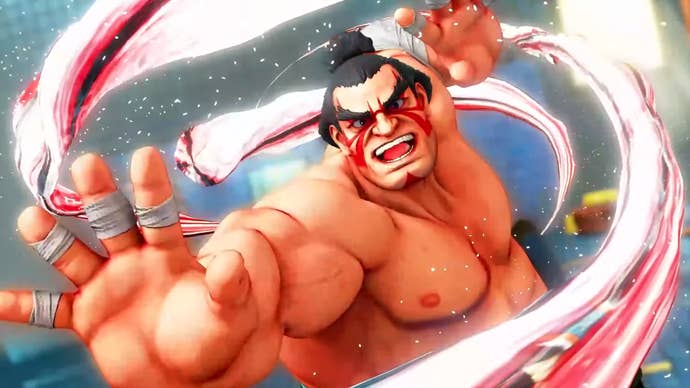
The DLC rollout has bounced around between newcomers and old fighters. How do you compromise between creating new fighters and making sure longtime fans can still pick their favorites?
The Producer, Director, Battle Design team, Art Director, etc. all need to align when determining the characters. And when everyone gets together to discuss the options, there is always a lot of discussion back and forth, in a good way! They are also very passionate about the series.
The first point they discuss is whether the character’s system works well with others and also the overall game system. After that, a more detailed discussion arises regarding who could have a great design, who would be fun to bring back and if it’s time for an all-new character to be added.
Nowadays, we can also quickly collect fan feedback on who they like and/or want to see in the game, which we monitor very closely. Whether we use a fan request or not is the final part of the discussion and is then ultimately up to the Producers and Directors to decide. The reaction from the fans after the announcement and launch of each new character will be used as a topic of discussion for future character additions as well.
How do you feel the V-System was received, by both hardcore and casual players? Would you consider carrying it forward?
The V-Skill, V-Trigger and V-Reversal systems were designed to maximize the characteristics of each fighter. With this, people can see and control the individual characteristics of each fighter not only with their iconic super moves, but also within these new systems.
We understand that introducing new elements like this into the Street Fighter series will get both positive and negative reactions, so we identified the elements that could be improved and had many discussions on how we could address them. Our response was to introduce V-Trigger II at the time of the Arcade Edition launch and V-Skill II with Champion Edition. I believe that these enhancements made the game’s V-System more important within the overall gameplay.
Whether the system was acclaimed by the majority of players or not, we will have to see in the future. I am sure the community is still figuring out how to best utilize this mechanic. When a future iteration of Street Fighter gets released with its own unique system, that is probably when we will get feedback on whether the V-System in SFV was good or not. We do understand that the introduction of V-Skill II may have made it a little difficult for casual players when selecting them, but we recommend that everyone try them out to find your favorites!
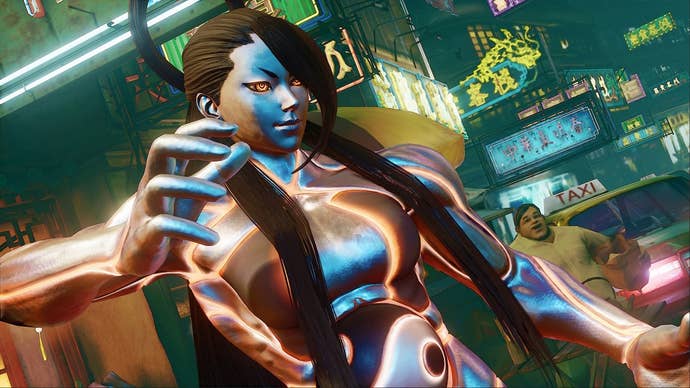
A major change with Street Fighter 5 was having gameplay updates come through as free upgrades for owners of the base game - so even if you didn't buy characters, you could still play the most recent version of SF5. Do you feel this was the right move for Street Fighter, and can we expect it to carry on to future games?
The model that was used for SF5 was a challenge for not only the development team, but also for Capcom. In the previous games, we had a “Version Up” model with Super and Ultra versions that were available for purchase. After Super Street Fighter 4, we utilized the upgrade option for players. Now, with SF5, we have a model where if you purchased the base game, you can basically continue to play that same version and get access to all of the game updates for free. This helps to expand the player base on an ongoing basis.
Based on the fact that we are seeing an increasing number of active users after the launch of Champion Edition, it makes me feel that this was the right direction. It’s so exciting to see a title going into its fifth year with an increasing number of active players, as we have not seen that in the previous iterations.
We may look into different business models for the future, but in order to determine that, we need to see how SF5 performed from multiple perspectives in the future.
A fan created a patch for Street Fighter 5's net code, and it became very popular. Now, you've recently released your own net code adjustment. What was your initial reaction to the fan patch, and is the adjustment meant to address some of those same issues?
I personally understand the PC gaming culture and the mod community. We, as a development team, looked into this netcode patch seriously, as it’s our responsibility to provide a fair and stable environment for all of our players. This mod altered the base foundation of the game, which resulted in an unfair scenario. Knowing this, it gave a boost to the team, who were already in the process of working on an adjustment to the netcode.
We understand that the netcode adjustment we made improved the majority of users’ online experiences, but not necessarily everyone’s. The fact that the netcode is so closely tied to the overall game design and that each user has different network environments, is the difficult part about developing an online title. Adjusting the game design (fighting system) and the netcode is something we need to look into continuously and we understand and embrace that challenge.
The fighting game scene has grown significantly, and some developers are responding by making their games more approachable - upcoming games like Guilty Gear Strive have highlighted accessibility. How do you think Street Fighter fits into that, and do you think more could be done to get newcomers into the series without losing what makes SF great?
Acquiring new users and a new audience are important factors for many industries, not only with gaming. With fighting games, a player’s skill level is an important element for them to have an enjoyable experience. At the same time, we understand that this factor is also the reason why some people could also feel less enjoyment when playing fighting games. I believe this factor is what makes fighting games unique from other entertainment counterparts.
Many developers are looking into approachability and are creating games that cater to all types of players. Our approach to this is to make sure that all players can understand and increase their skill level, while having fun too. This is something that we will continue to look into now and in the future.
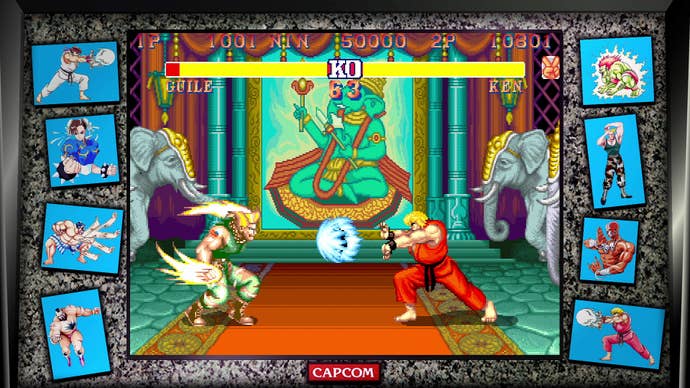
Both Ryu and Ken are in Smash Bros., and old fighting classics have made their way to the Nintendo Switch. How do you feel about the platform, for Street Fighter and for fighting games in general?
Since the Switch came out, we’ve released Ultra Street Fighter II and Street Fighter 30th Anniversary Collection for that platform. From a business standpoint, these two titles were a success. We are seeing many competitive titles, including Smash Bros., doing well on Switch and players are enjoying those types of experiences on that platform. If there is another opportunity that makes sense for us, we would consider the Switch again. Regarding Street Fighter 5, it is currently exclusive to PS4 and PC. However, as mentioned above, we do see Switch as an important platform for all types of games.
As the next generation looms, what do you see as the next big innovation for fighting games in general? What technology do you think Street Fighter could make use of in the future?
I think the Street Fighter series is in a genre that is less affected by and reliant on those new technologies. However, when PS3 and Xbox 360 came out with online functionality, we supported those systems with content that took advantage of that feature. That said, I am sure we will look into all of the new technologies surrounding the upcoming hardware and try to utilize them in future games in ways that benefit our players. We do not know those specifics yet, so please stay tuned!
This interview has been lightly edited for clarity.
